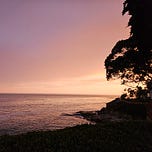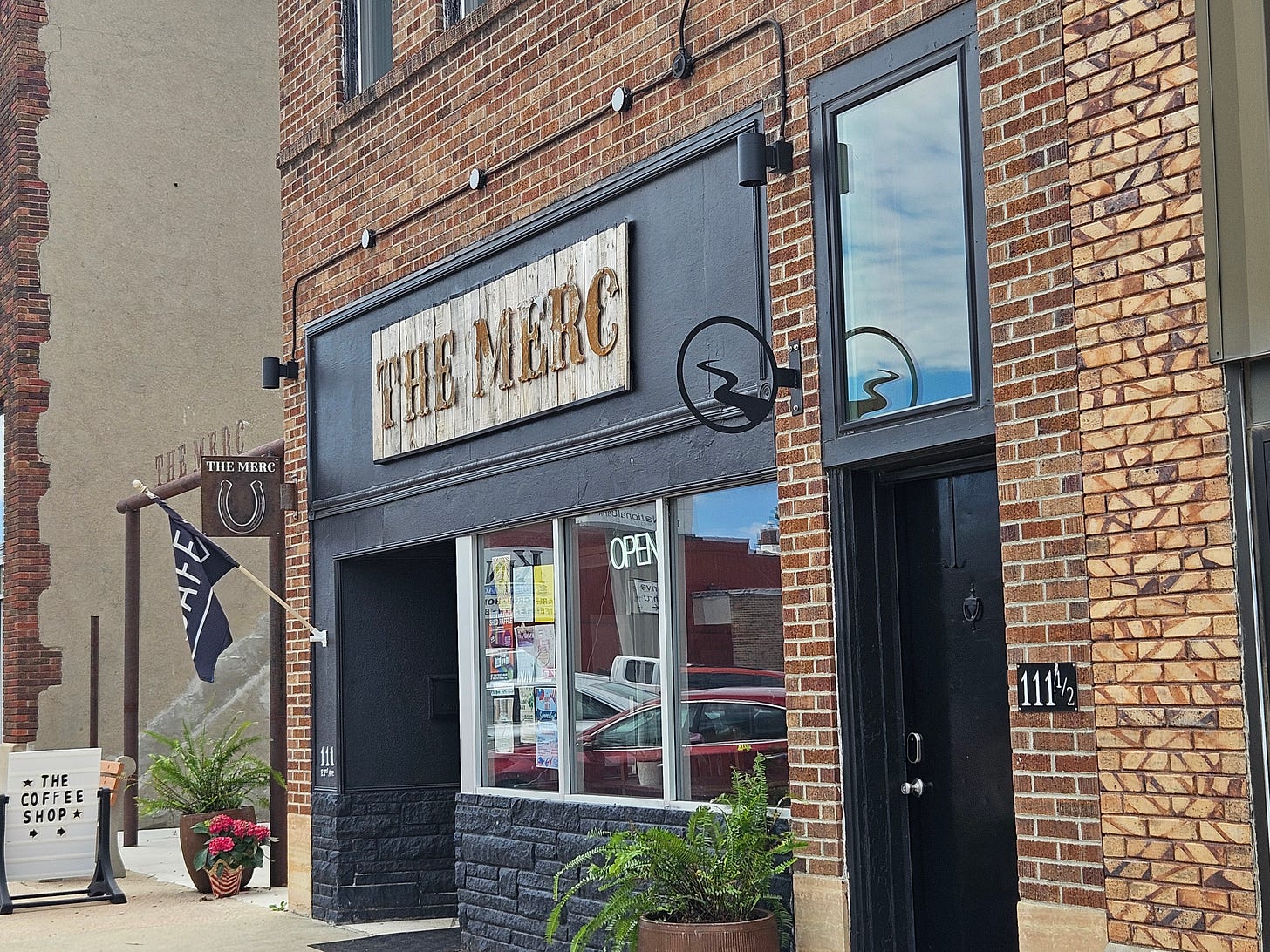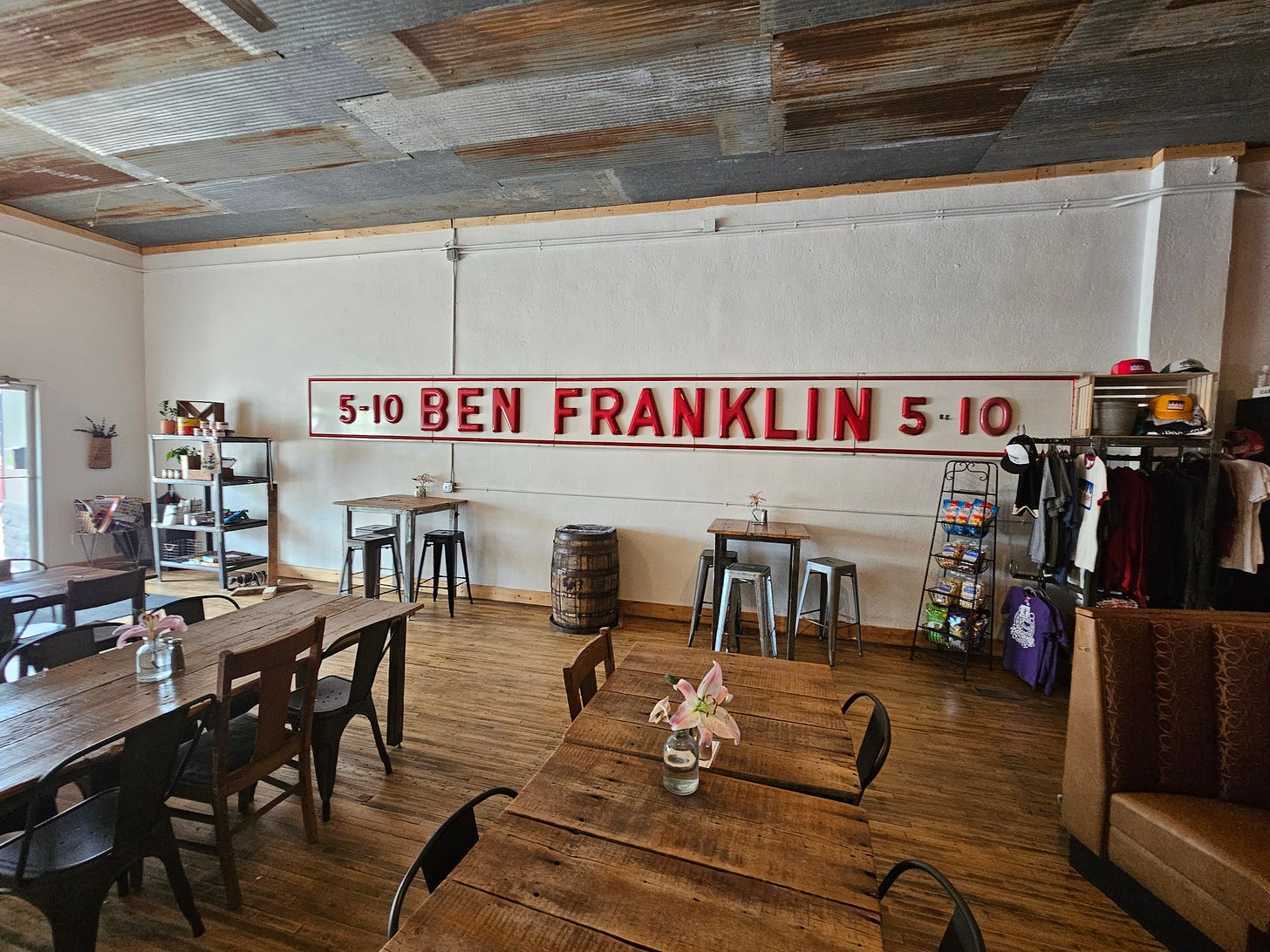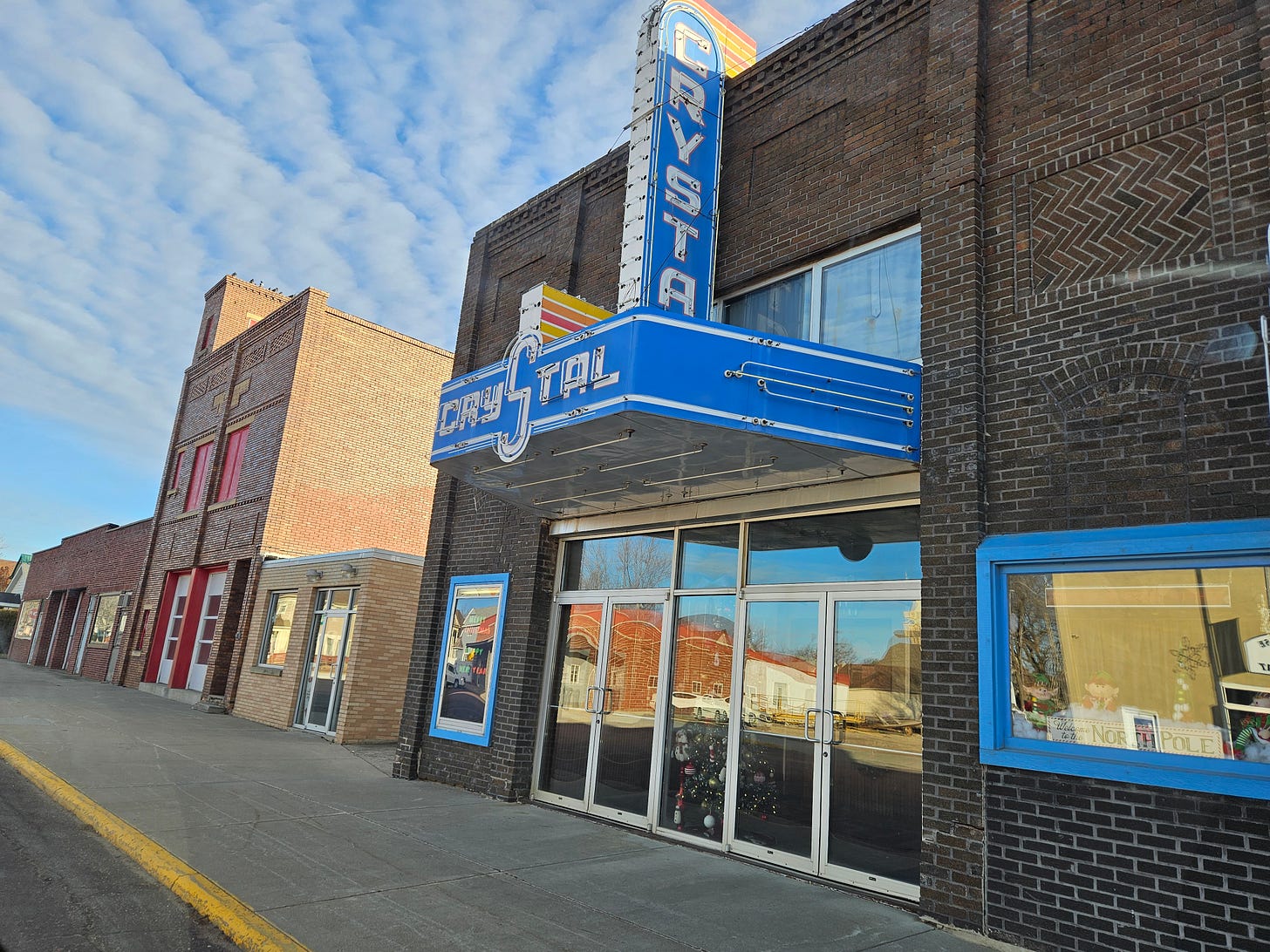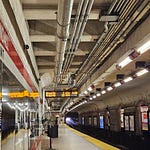Content Warning: Photo of carved reindeer meat in this post.
June 23, 2024, Santa Cruz, California
I’m writing this from my daughter’s place in Santa Cruz, California after spending a month at home in St. Paul, Minnesota with a quick weekend drive to Flandreau, South Dakota, my other childhood home where my grandmothers raised me much of the time between the ages of five and fourteen. It is jarring to be in Santa Cruz after a month at home. The cool sea air, the sea bird sounds, the young, fit couple that walk their mohawk-cut dogs past the front window everyday are many miles of prairie and desert roads, treacherous high-up mountain roads, Bay area Tesla-racing roads away from South Dakota country roads. After years of travel—being in different places, having multiple places I can call home—feels uneasy. I dread the travel, but then I get there and I settle in for a few weeks or months. With age, I feel more strongly the tension between the road and home. It gets riskier to be on the road. Even relatively small medical issues loom larger. When is my next cortisone shot due in my arthritic ankle? When the cortisone is doing its thing, I am relatively pain free. When it wears off and the next shot is due, I can suddenly not walk without considerable pain. I could not make it across one of the global-crossroads airports through which I regularly travel if suddenly the cortisone fails.
August 8, 2024, American Airlines Flight 136, LAX-LHR
It was jarring to be in LA this past week too. Although I am fortunate to have multiple homes. I feel at home with my daughter in her little house in Santa Cruz. I feel at home with my partner in his little apartment in L.A. I feel at home in my aunt’s comfortable house in St. Paul. I no longer have a house to go to in Flandreau, and haven’t since my grandmothers died. I remember being told my great-grandmother was going to will me her little house that I lived in on-and-off from second through sixth grade, but I said no. I said I’d never live there. Another relative inherited her house—a relative who stayed her whole life in that town and helped take care of granny near the end of her life. Someone in the family eventually sold it. I sometimes regret not taking it, but my relative was more deserving. And I know that even a little house requires lots of maintenance, and money.
Whenever I am in Flandreau, I drive by Granny’s house. My partner came with me this summer. Born and raised in southern California, it is a starkly different landscape for him. He loves to drive the open roads out there. He hates driving in L.A. He took me to LAX today. No matter the time of day, the highways are jammed. The skies over L.A. were hazy and very pale blue today. No cotton-ball clouds, no tall piercing blue skies like over Flandreau. I am not a fan of the skies in L.A. They’re boring. The sun is hardly ever eclipsed by the sky art that is clouds. Plus, it’s not good when I drive in L.A. My daredevil side comes out. But then I see the ridiculous Teslas racing and I slow down so as not to be a jerk like those guys. I’ve probably driven over 100,000 miles of country highway. I don’t mind that Cedar wants to drive them all now. I look at the clouds and reminisce about the last time I was through this or that state or town.
When we were in Flandreau in June, we visited the Dakota cemetery in the country. It is getting crowded now. There is hardly any room left in our family plot unless one goes north to the edge of the cemetery, past Little Crow’s grave. I might put a small bit of my ashes near to Granny’s grave. I’m not sure how to do that. But most of me won’t go back there. Most of my mom’s cousins are there now. My great-grandparents, my grandmother, and her sister are there. A couple of babies that died a very long time ago are there. They’d be old people too now, or already passed away even if they hadn’t died so young. My Uncle Ronnie already has his headstone in the cemetery with his picture on it. He looks happy in that picture in his dance regalia. He's close to Little Crow’s headstone. Ronnie’s headstone made me think of the photographs in Harry Potter where the subjects are less frozen in time—moving as they would have. That’s the kind of photo I’d want on my headstone if I were to be buried, which probably not. Maybe a moving photo that pulls a joke and turns into a zombie face and back.
Ronnie lives in the tribal assisted living facility. Cedar and I visited him too. He was in good spirits given that he doesn’t love being in assisted living and no longer being able to drive his souped-up big black Dodge Ram truck. I have a lot of questions I want to ask Ronnie. But he’s not one to dwell on the past or on difficult times. He is a cheerful person. I remember how he came over to Granny’s for lunch many days during the summer when I was a kid. She was always happy to see him. So was I. He’d stay for the lunch hour then go back to work. Ronnie and only Ronnie always calls me by my middle name, Margaret. Ronnie never ever spoke to me with disdain or neglect like some adults in my childhood. The iconic AIMsters with their leather vests, chokers, and shades were the worst to kids. In my childhood it was often the men who fancied themselves the most traditional Dakota or Ojibway etc. who were the worst. I’ll come back to them later, and definitely in the next book. I learned young to be leery of those who lack humility in all of that traditionalism. Ronnie, on the other hand, demonstrates and doesn’t preach. He was and remains one of my favourite people. I want to ask him about his childhood, and my mother’s. I want his perspective on the stories I’ve heard only from her. I’m sure he has stories I haven’t heard that would make me laugh. And I’m sure he has stories he’ll never tell me. He asked Cedar about himself. Not everyone where I’m from asks a newcomer about themselves. I think it is partly not wanting to pry. But I also think it’s not wanting to know, not wanting to hear about lives lived far away, and differently. But Ronnie asked. Because Ronnie never seemed to want to be anywhere or anyone else than who he is. I think he is not afraid to hear about lives lived differently. He’s rare for that town. I have a tribal writers’ retreat in Flandreau in September. I’d like to go see Ronnie every day that I’m there; if he’s in the mood for it. One plays it visit-by-visit with elders. If they’re in the mood to talk, settle in for some good stories. If they’re not, don’t push it.
Cedar and I went into a new business on Flandreau Main Street. There is now a hipster coffee house and small restaurant with higher end wine and spirits for sale. It’s right next door to the bakery, probably the oldest surviving business on a Main Street in a thirty-five-year decline. The new business called the Merc is in the old Ben Franklin’s five and dime store. They even saved the old Ben Franklin’s sign from the exterior of the store, But the interior is now completely different. The cappuccino was decent. Fingers crossed they make a go of it. It would be nice to have somewhere to hang out besides the casino. I never imagined sipping a cappuccino on Main Street Flandreau.
I have lots of memories from Ben Franklin’s when I was a kid, when I didn’t know what a cappuccino was. I can still smell the cheap Russell Stover’s candies and the Barbie dolls and other plastic and rubber toys in there. I still remember the sourpuss old white ladies who worked there and would peer around the ends of the toy aisle at me while I pondered what to buy with the few dollars in my pocket Granny had given me. Like I was going to steal something. The Rexall Drugs down the other end of Main Street had a hand-written sign in the window: “No more than three students allowed at one time.” We all knew they meant Indian School students, and not town kids who were mostly white. Although Native kids from town usually went to the town public school. The Indian School was only high school and it was a boarding school that drew students from all over the US. I gave a talk in Montana a couple years ago and a woman I met who teaches at a tribal college there remembered my grandma who was a matron in the girls’ dorm, and who also ran a ceramics studio in the dorm basement. My grandma busted her for an infraction that my new acquaintance said was unjustified. It definitely sounded like Grandma was in the wrong. I won’t tell the whole story I heard so as not to embarrass my grandmother beyond the grave.
Cedar wonders if we can produce a small film festival in Flandreau. He got big eyes when he saw the remodeled Crystal Theatre, the previously falling-apart old film house from my childhood. I saw Grease, Scanners, The Wiz, Roller Boogie, On Golden Pond, Ghost Story, and Chariots of Fire there. My grandmother told me about going to westerns there in the 50s and 60s. She hated westerns, and rooted for the Indians, of course. The bathroom in the Crystal Theatre of my childhood smelled like pee and had a dim red light that flickered on and off like in a horror movie. An elderly white couple ran the theatre until the wife got dementia and would give us kids the wrong change at the concession counter, often in our favour. Some of us took it, some of us felt guilty, but it was hard to explain to her. The husband dressed in overalls like a farmer. Maybe it was his retirement job after he sold the farm. The town got together and refurbished it a couple of decades ago and made it a community performance space. Perhaps my vision is too limited by my childhood. I have a hard time imagining a film festival in Flandreau. I have a funny story about Cedar. On his way driving from LA to meet me in June at home (I’d flown in earlier), he drove through Kansas and pulled off the road for gas. He came into a little town with an old fashioned gas station and a guy who came out in overalls to pump his gas. Cedar exclaimed: “It was straight out of central casting!” I laughed, “Honey, that’s just Kansas.”
Over Goose Bay, Near to St. John’s, Newfoundland
I’m zooming through the air—the map says we’re almost over Goose Bay and about to pass St. John’s Newfoundland. I like visiting St. John’s. It’s beautiful. I don’t think I’d want to live there so far out into the sea. We’ll soon be over the Labrador Sea, the Atlantic and the great islands and ice out there. We are 2653 miles to London/Heathrow and it is -56.2F up here. It’s 6:38pm in LA, so that makes it just past 11:00pm here. I always watch the maps on planes. I rarely watch films. I also don’t pay for WiFi so it’s writing time. I’ll have to close the window shade when the sun comes up because all of these airplane people these days think they’re vampires. I know I should sleep, but it’s not even dinner time back in LA and I’m wide awake. I have a long layover in London Heathrow (LHR) before my flight to Stockholm Arlanda (ARN), then another longish layover there until my plane to the north of Sweden. I’ll land at 11pm tomorrow night in Luleå (LLA), a small city near to the Artic Circle. A city I’ve been to a half dozen times now. It also feels a little like home in the grand old hotel in the centre of the city where I often stay. It’s only a few blocks to my favourite café on the main drag. The pub next to the hotel is like a European pub out of a movie and the food is decent. The other patrons are always jovial. I look at the airplane map. We are at the northern edge of the planet’s darkness. I love the north for its long summer days. You pay for it in winter, but in summer, the many hours of daylight are a gift.
I will be tired in Heathrow all day. I am sure I will find a good flat white and good people watching as the obvious American in my flared yoga pants and bright pink and gold running shoes. I don’t even try to blend in anymore anywhere I go. I just try not to be loud. We have left Canadian airspace. We are over the deep dark sea and I should sleep some.
August 10, 2024, Luleå (LLA), Norrbotten County, Sweden
Last night I arrived in Luleå in the north of Sweden to my colleague’s house, where my devices remembered and auto-connected to WiFi. The sun rose around 4am; I slept until 5—not bad. I’ve never been in Sweden when it’s been this warm, which is only 65F and it is beautifully overcast. The low-hanging clouds were incredible at Heathrow too yesterday. So wispy and voluminous and artful.
In between snoozing and writing, I read on the plane and in the airports James K. Rowe’s Radical Mindfulness: Why Transforming Fear of Death is Politically Vital (Routledge, 2024). I am not a Buddhist, and this book approaches death and mindfulness via Buddhist ideas as well as other mostly non-Native Studies approaches, but which address modes of racial, colonial, and other intersecting forms of domination in “the West.” The back cover sums it up concisely: “James K. Rowe examines fear of death as a cause of systemic inequalities and proposes a more embodied approach to social change as a solution.” I picked up this book because I am fascinated with settler-colonial society’s fear of death, how it tends to view death in a binary with life instead of as part of a set of relationships. I began thinking more about the colonizer’s relationship to death during the COVID-19 pandemic and wrote about that here on my Substack Unsettle back in October 2021. I noticed so much language about “doing all the right things” to avoid the virus. And yes, of course, public health measures. But there was an undertone, like with much of the language around death and dying in settler society, of fighting death, as if it’s a battle that can be won by the superior human in control of nature. As if death is a punishment for sin. Rowe writes, quoting Tibetan Buddhist teacher Chögyam Trungpa that “in the ‘tradition of ego-oriented culture, death is seen as a defeat and an insult.’” (As an aside, I just went down a Wikipedia rabbit hole regarding the controversies surrounding Trungpa and one student in particular.) Rowe draws on a variety of theorists to argue about the relationship between human feelings of inadequacy and finiteness that go hand-in-hand with fear of death, and which lead to desires for power and control. He analyzes the destructive idea that death can be averted by dominating others, resulting in more or earlier death for those on the lesser end of the scale of power. Specifically, Rowe examines the role of death fear in violent race, gender, colonial, and species hierarchies. He insists that lessening fear of death is key to lessening violence and domination. It’s a compelling thesis and I look forward to fully digesting the book.
I was at a dinner with academic colleagues last year, all non-Native, except my sister who traveled to the city where I was speaking to see my public lecture. Dinner conversation turned towards a conversation about the fear of death, and one colleague whose science and technology studies scholarship I really appreciate said “Everyone’s afraid of death!” My sister Jody and I looked at each other and both agreed that we are not. We enjoy our lives, but this does not translate into a hanging on for dear life, as they say. I added that I am afraid of suffering, but not death. I joked with my partner recently that my religion is finding ways to not suffer. I have to interview Jody about her views on death. I want to ask her what she remembers about how we came to agree so profoundly on something we’ve never discussed. We were both raised for much of our childhood by our grandmothers; no doubt we absorbed similar lessons.
Death fear might seem ubiquitous in settler society, but it is not at all characteristic of all humans. Rowe writes:
Recall that Hegel called death ‘the absolute master,’ equating finitude with enslavement…feelings of belittlement and inadequacy in the face of a vulnerable and uncertain existence easily morph into a dripping resentment toward the seeming shit show we’ve been born into. We are fragile and finite beings bossed around by hunger, the weather, our bladders, by time, and by death, the absolute master.
We compensate for our felt inadequacy and servility by imposing ourselves on the natural world and other people to exert the control we feel is fundamentally lacking from our basic existence” (Rowe, 34).
I have a lot of marginal notes and question marks in Rowe’s book. It’s sparking many thoughts for me. For example, I don’t understand death as a mark of finiteness, but as a moment of ongoing connection. And “connection” like “community” is not promised as paradise or salvation. What evidence do we have of that story being true? I always remember my Ph.D. co-advisor, James Clifford, commenting to me in my first year of graduate school that people think they want “community,” but we need to remember what community involves. I knew exactly what he meant having just spent the previous summer living at home in South Dakota with a relative who exploited me in various ways all summer long. Who then blamed me when I named the exploitation, and called me non-traditional for not complying. I can laugh now at the perversity of it, but back then I was transported back to the entrapment that was sometimes my childhood, and rage at a relative not realizing I no longer had to tolerate it. Jim’s point and mine is that connection and community also involve pain and struggle. Being part of a web of relations (I will keep trying to think of a less clichéd term), should not be romanticized. When it is, one may end up with feelings approximating “resentment,” “fragility,” rage, and being “at the mercy of death” instead of a non-romantic sense of connection to all of it. I prefer connection to the tribe, which goes beyond the immediate or even extended family, and to our history and to our landscapes, but it is never not also a struggle. It is not a 100% guarantee against feelings of isolation. And I don’t think we are a unique community in having that reality. I still have a bit of thinking to do on this topic. I’ll probably turn it into a research project. I had a conversation with a colleague in Alberta recently who is also interested in “Indigenous approaches” to death and dying, and what that means in a community not only of humans but with a variety of nonhumans too, both material and energetic.
I think much was taught to me by my Dakota ancestors, not about “accepting” death (who am I to accept it or not?), but acknowledging death’s role in ongoing life. Many of those ancestor-teachers have their lives marked in etched headstones in the cemetery at Flandreau. Increasingly they put snapshots of their earthly bodies onto the stones. My other uncle, Bill (who is also not yet dead), has his dog Leo’s picture on his headstone next to his own, also in his dance regalia. My ancestors and relatives didn’t and don’t preach very much about life and death as far as I recall. They must have talked or told stories that indicated their orientation to the material relationship between life and death, the ongoing-ness of our collective tribal life that includes individual “deaths” or transitions. Some of them visited us as we mourned and reflected and rested and told stories in the hours and days after their bodies were pronounced dead, usually at the town hospital. It takes a few days generally for their energetic vibrancy to move on. I was told this is why we have three-day wakes. It is with those kinds of thoughts swirling in my head that I come to try and make sense of a book citing great Buddhist teachers, Black studies and feminist scholars, a book that interrogates the fear of death and its role in white supremacy and more.
Time for a nap in the soothing overcast light of this Luleå morning that goes on and on after an early rising—when bodily rhythms are still catching up to a jet-accelerated relocation across the globe. Humans have impressive finite mastery. They can do things like fly us from LAX to the north of Sweden in 24 hours. But as part of the collective, including our energetic transition via “death,” we become a little less finite, or is it more connected?

